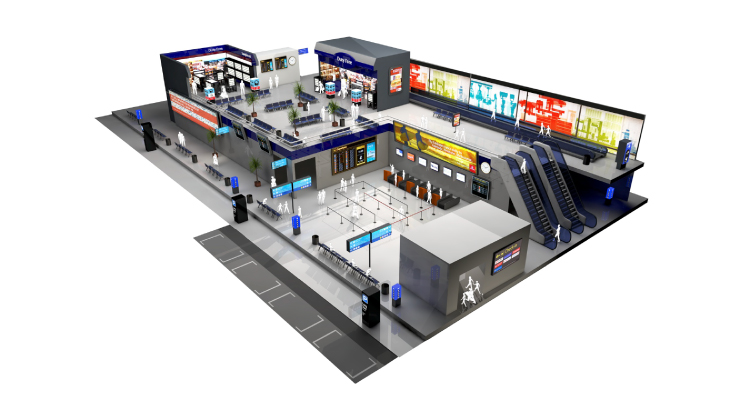The New Corporate Events Center
Team-building. It’s one of the main purposes of bringing people together in one space, and even though there may be a shift in where work gets done, one thing is pretty clear, people still want to gather together physically in a common space to work together.
If you haven’t seen Gensler’s new U.S. Work From Home Survey 2020, you should take a look at it — it may dispel some of the doom and gloom about the death of the office space.
The study showed that only 12% of people want to work from home full-time and that 70% of employees want to work in the office for the majority of the week. Why? Well, there were several reasons (and I won’t recite the survey here as you can go read it for yourself), but one of the major factors was — you guessed it — people.
“The top reason workers want to come to the office: the people. When asked what they miss the most about working in the physical office, three out of four respondents said the people. When asked to rank the most important factors for wanting to come into the office, meetings with colleagues, socializing with people, and impromptu face-to-face interaction were the top three answers.”
I’m not surprised as these findings mirror many that were communicated in Gensler’s previous study on why people still go to public spaces (I wrote about that over two years ago in The Science of Why).
But today I’m not making a case for the continued presence of the office. Instead, I’m arguing for a revolution in corporate meeting spaces.

If you’ve ever been to an off-site meeting with your company, the typical experience is traveling to a city, staying in a hotel, eating in a banquet hall and meeting in another banquet hall set up with some projectors or displays. I’ve joked before that the problem with a banquet hall is that it was designed for serving napalm-heated food, not for engaging an audience.
If it’s a really great meeting, you may have a night off-site at another venue to do some unique team-building activities (scavenger hunts, bowling, volleyball and murder mystery theater all come to mind as events I’ve done with my employers throughout the years). If there is training, perhaps there is a teamwork and hands-on component that includes competition. I fondly remember supporting the CCS Installer Olympics and also participating in Chief’s Video Wall Building Challenge.
The reason these meetings are effective and the reason corporate retreats or reward trips also work so well is that they break the social structure down and bring everyone to the same level. The corporate hierarchy disappears and the vendor-client power structure fades, yielding the opportunity to connect in a different way.
So if companies are already creating these types of events, leveraging multiple venues, traveling hours by plane to distant locations, why hasn’t the hotel industry caught up? Why are event centers still pink and white rooms with accordion-style dividers, equipped with uncomfortable banquet chairs in perpendicular arrangements?
Imagine if you will …
Instead of a hotel with rectangular banquet halls that serve up fish, chicken and PowerPoints with equal amounts of blah and a co-located golf course, you instead entered a corporate retreat theme park of sorts. Outdoor amphitheaters boast concert-style stages and AV for presentations, with a variety of ways to sit, stand, lounge and participate. Grills and picnic tables for meals surround a circular lake with an automated water skiing tow rope. Rock climbing and archery allow for competition and team activities. Rooms are themed like cabins, offering distanced privacy but also encouraging participation outside rather than extended hours shut-in.
The other side of the resort includes flight simulators, barracks-style rooms, debriefing centers, tactical planning and business-style war games complete with open-air dining. Yet another area is set up as a race school, go-kart racing, pit crew training, engine modifications for team building, a stadium set up for meetings and separate rooms located in the center of pit row, like driver team RV’s at an event.
If hotels and resorts took a lesson from what companies actually do when they come and utilize their spaces, they could create a fully on-site experience that accomplishes all the goals of these meetings and retreats in a way that sets them apart from their competition.
As an extension of this, eliminate the rooms themselves, and even a company like Convene or WeWork could create corporate amenity centers that offer way more than a coffee bar with a barista and a large rectangular meeting space.
Of course, all of this requires vision, money and work but I think the return — especially with the insights we have on why people gather — will be exponentially higher than the investment.





